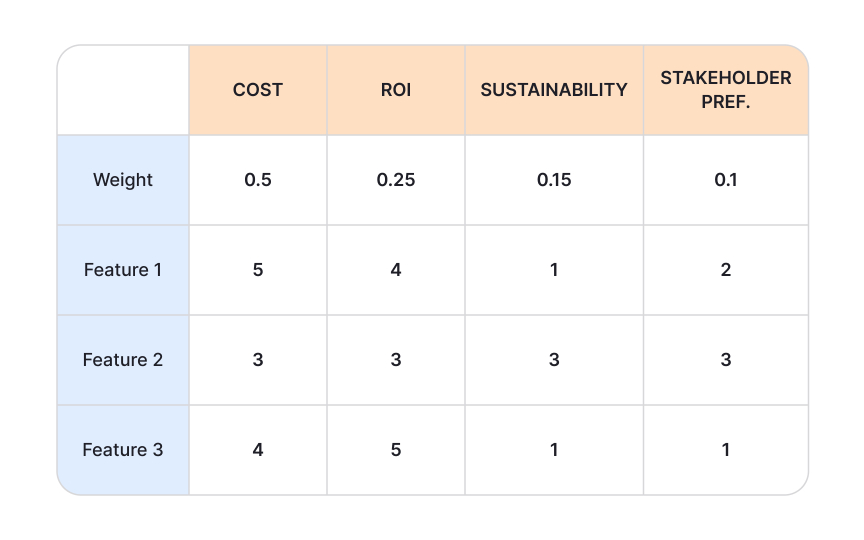Frameworks for product decisions
Making consistent, effective trade-off decisions requires structured thinking. Decision-making frameworks provide a systematic approach to evaluating options and their implications. These frameworks help product managers reduce bias, consider multiple perspectives, and make choices that align with strategic priorities:
- Impact vs. effort matrices help visualize which options deliver the most value relative to implementation difficulty. By plotting potential features or solutions on these two dimensions, product teams can quickly identify "quick wins" (high impact, low effort) and avoid "money pits" (low impact, high effort).
- Weighted scoring models allow teams to evaluate options against multiple criteria. By assigning importance weights to different factors, like user value, revenue potential, and technical complexity, and scoring each option, product managers can make more nuanced comparisons beyond simple binary choices.
- The RICE method (Reach, Impact, Confidence, Effort) offers another structured approach, incorporating both the scope of impact and the team's confidence in their estimates into the prioritization process.[1]
Pro Tip: No framework is perfect. The most important benefit comes from the structured thinking and team alignment that frameworks facilitate, rather than from any specific formula.

